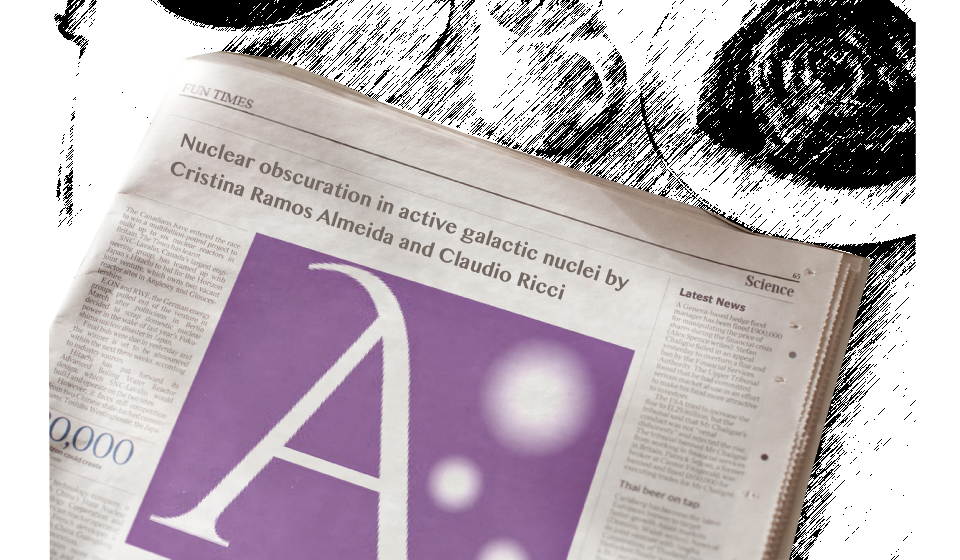
Nuclear obscuration in active galactic nuclei

By Cristina Ramos Almeida
Abstract: "The material surrounding accreting supermassive black holes connects the active galactic nucleus with its host galaxy and, besides being responsible for feeding the black hole, provides important information on the feedback that nuclear activity produces on the galaxy. In this Review, we summarize our current understanding of the close environment of accreting supermassive black holes obtained from studies of local active galactic nuclei carried out in the infrared and X-ray regimes. The structure of this circumnuclear material is complex, clumpy and dynamic, and its covering factor depends on the accretion properties of the active galactic nucleus. In the infrared, this obscuring material is a transition zone between the broad- and narrow-line regions, and, at least in some galaxies, it consists of two structures: an equatorial disk/torus and a polar component. In the X-ray regime, the obscuration is produced by multiple absorbers across various spatial scales, mostly associated with the torus and the broad-line region. In the coming decade, the new generation of infrared and X-ray facilities will greatly contribute to our understanding of the structure and physical properties of nuclear obscuration in active galactic nuclei.
Over the past few decades, several pieces of observational evidence have shown that supermassive black holes (SMBHs; MBH ≈ 106–9.5M☉) are found at the centre of almost all massive galaxies, and that those SMBHs play an important role in the evolution of their host galaxies during a phase in which they accrete material and are observed as active galactic nuclei (AGNs). Indeed, different modes of AGN feedback are expected to be key processes that shape the environment of SMBHs. In particular, quasar-induced outflows might be capable of regulating black hole and galaxy growth. For instance, they are required by semi-analytical models of galaxy formation for quenching star formation in massive galaxies. However, directly studying the influence of nuclear activity on galaxy evolution is difficult owing to the different timescales involved. Therefore, to probe the AGN–host galaxy connection directly, we must look at the structure and kinematics of the parsec-scale dust and gas that surrounds accreting SMBHs.
AGNs radiate across the entire electromagnetic spectrum, from radio wavelengths up to the gamma-ray regime. A large fraction of this emission is produced in the accretion disk and emitted in the optical and ultraviolet (UV) bands. A significant proportion of these optical/UV photons are reprocessed by: (1) dust located beyond the sublimation radius and re-emitted in the infrared (IR); and (2) a corona of hot electrons close to the accretion disk, which up-scatters them in the X-ray band and illuminates the surrounding material. Thus, studying the IR and X-ray emission and absorption of AGNs is essential for characterizing their nuclear regions."

